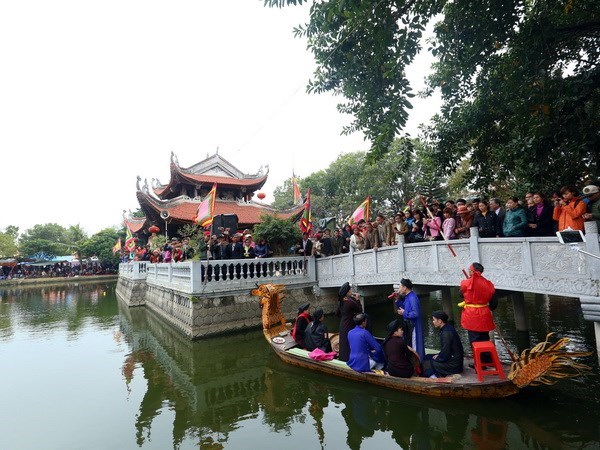



Quan Ho is
performed on boats - Illustrative image (Source: VNA)
The annual festival takes place on February 27-28 or the 12th and
13th days of the Lunar New Year.
The incense-offering rituals were organised at Hong An pagoda (Lim pagoda) on
Lim Hill. The pagoda is dedicated to Nguyen Dinh Dien (Hieu Trung Hau),
who invented Quan Ho.
The Lim festival contributes to preserving the locality’s traditional cultural
values and promoting images and tourism potential of Bac Ninh.
The organising board has arranged six areas and one stage for Quan Ho singing.
Quan Ho is also performed on boats, and at pagodas and communal houses in Noi
Due and Lien Bao communes, and Lim town.
Besides Quan Ho singing, the festival also features various folk games such as
traditional wrestling, earthenware pot breaking, and bamboo swinging.
The art of love duets was inscribed in UNESCO’s representative list of intangible
cultural heritage in September 2009.
Quan Ho is an art form that combines various elements, including music,
lyrics and costumes, and features the distinctive culture of people in the
region formerly called Kinh Bac.
The singing represents different kinds of relationships -- the
relationship between male and female singers as romantic lovers, the
relationship between two friendly villages and the relationship between
performers and the audience. Each element helps define Quan Ho, give it
life and meaning, and the resulting harmony is so much more than just a
beautiful song.
Source: VNA
At the end of May, the Hoa Binh Provincial Ethnic Arts Troupe organized a series of performances for residents in Region 2 and Region 3 communes across the province. Bringing art to ethnic communities in remote, isolated, and especially disadvantaged areas has become a meaningful activity. These are not merely artistic performances but also journeys to disseminate cultural values, enrich spiritual life, and contribute to preserving the cultural identity of ethnic minorities.